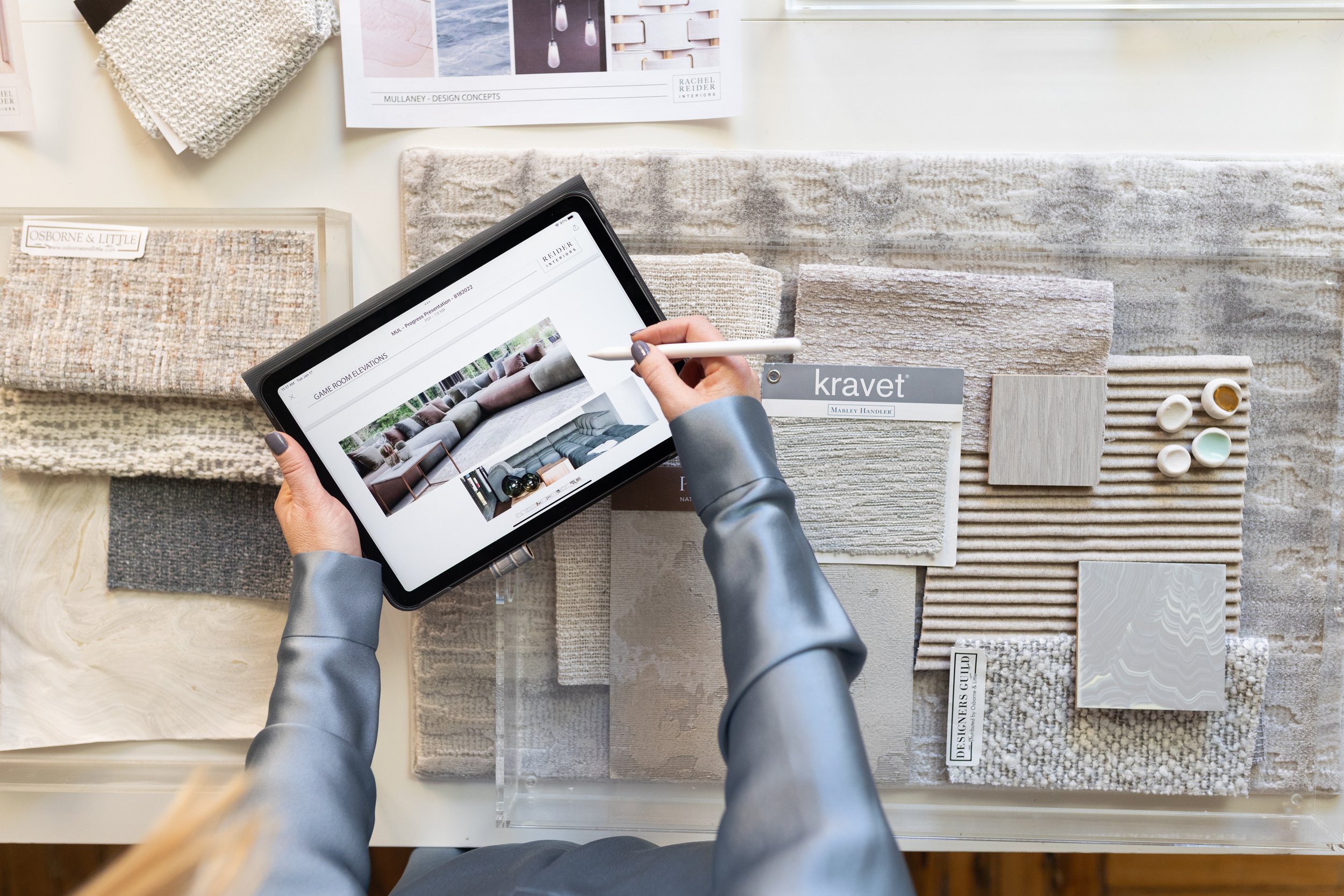7 Steps to Get the Home You’ve Always Dreamed Of
Designing the home of your dreams can be a lot to take on and think about. But with a well-honed process and a clear path forward, the experience can be a lot less stressful. In this month’s blog, I’m sharing my 7 steps to get the high-performance, high-style home you’ve always dreamed of.
The pandemic may feel like a lifetime ago, but its impact and influence on design have forever changed how we use our homes. Home offices are now permanent fixtures, and outdoor dining solutions have replaced traditional indoor dining throughout many months of the year. Homeowners have also been a lot more willing and interested to take on design projects if it means turning their cherished family home into one home of their design dreams.
So whether it’s just a few rooms, a full house renovation, or a new build, here’s my 7-step framework to help give you a clear idea of everything you need to know before you begin.
Step #1: Hire a Designer
I know this can seem daunting at first. But a designer will save you time and stress, and provide you with invaluable knowledge and resources. The result: a cohesive, unique, and beautiful home that meets all of your functional and lifestyle needs. Finding the right designer can also feel overwhelming.
Here are some places to start your search:
If you love a friend’s home design then ask for a referral.
Browse through design magazines or social media apps like Instagram.
Attend home tours and show houses.
And after you have leads, thoroughly explore a designer’s website for more info and their design vibe to make sure they fit your preferred aesthetic.
Step #2: Define your interiors investment
Defining your investment at an early stage is important as it can drive the scope of work as well as how the spaces are designed and what materials are used. Your designer can help you to define your investment if you don’t have a figure in mind. A lot of variables go into putting together an interior investment.
Some keys factors are:
Function and size of the room
Material and finish selections
Client’s style preferences
Example: For a premium living room design you can expect to pay between $6-$20K for a single sofa whereas the average cost for drapery treatments and hardware is in the ballpark of $1.5K-3K per window.
Step #3: Define your lifestyle needs
Asking questions to determine your lifestyle needs for the home or space is a vital step in the discovery process.
Questions to ask include:
How do you live and how could your space function better?
Do you have kids or pets?
Do you need a blacked-out bedroom for sound sleep?
Do you need a homework hub for kids?
Do you need a kitchen that accommodates caterers?
How many people do you want to seat at your dining table?
And once you’ve gathered those answers, make a list. This information is crucial for your designer as they jump into the design process and plan your home to accommodate all of these needs.
Step #4: Determine your style
You don’t need to label your style because labels mean different things to different people. The best thing to do is create a Pinterest board or collect magazine clippings of rooms you like.
In talking through these images with you, a designer will be able to pick out the patterns and themes, such as:
Do you like glossy finishes or matte?
Plush fabrics or highly textured fabrics?
Are you drawn toward geometric patterns or organic patterns?
A designer’s job is to be a guide and translator of your interior dreams and turn them into a unique design that captures your style preferences.
Step #5: Understand your color preferences
Color can be highly personal. Some clients are drawn to neutrals, while others love bold, deeply saturated hues. Most of our clients want to explore color but aren’t sure how to do so.
If this is the case, we suggest a more neutral foundation and then layer in pops of color with the accessories or smaller upholstered pieces. This way, you can easily change pieces over time while keeping the larger investment pieces timeless. It also enables you to scale up or back with color over time. Be sure to check out our previous blog to learn more about the power of color in design.
Step #6: What fabrics work for you
Clients often struggle with the question of form vs. function. They love to entertain and want a sophisticated home but worry that isn’t possible with kids, pets, etc. I’m here to say you can have it all! There have been huge advances in fabrics over the last decade, so they now have built-in stain treatment, and it’s hard to determine the difference between indoor and outdoor fabric. But you (or your designer) need to know what to look for. The fabric content is the most important as some are easier to clean than others.
Durability is a key factor, too. This can be measured with abrasion tests called double rubs which can be found on the back of most fabrics. A double rub is every time someone sits or comes into contact with the fabric. While many retail stores consider 12,000 double rubs to be heavy-duty, we don’t use anything less than 30,000 double rubs for upholstery and heavily used pieces. Many beautiful fabrics don’t meet the above requirements, in which case we use them for pillows, drapes, or other accents that don’t get a lot of everyday wear and tear
Step #7: Dream Big
And finally, think big when you’re putting together your wish list. Show a great outdoor space from your favorite resort or an inspiring element from your travels. Where you might see limitations, a designer can see opportunities. We’ve designed everything from a cigar room to a rope-suspended floating bed in a coastal home to a sunken living room for a ski chalet. Renovations can be long, a big investment, and stressful but you want the end result to exceed your expectations.
I hope that helps to get you started on your journey into home design.
Until next time,












